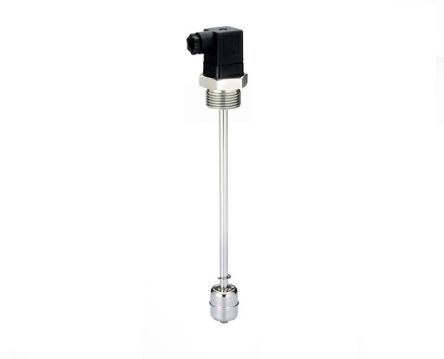
■ 제품필수정보
| 제조사 |
Cynergy3 |
| 제조사품명 |
SSV66A200E1GP |
| 간략설명 |
Cynergy3 SSV66A-1G Series PCB Mount Stainless Steel Float Switch, Float, NO/NC, 300V ac Max, 300V dc Max |
■ 제품사양
Device
타입 = Float
장착형태 = Vertical Switch Output = NO/NC Body Material = Stainless Steel
최소 작동 온도 = -20°C
최대 작동 온도 = +120°C Maximum AC Voltage = 300V Maximum DC Voltage = 300V Maximum Current = 500 mA Maximum Pressure = 20bar
시리즈 = SSV66A-1G Cynergy3 Level SwitchThe Cynergy3 SSV66A-1G series level switch is vertical mount type and has NO/NC output configuration. This float level switch has a stainless steel body. It has a maximum operating pressure of 20bar. It has a 200mm switching level. The switch is a high tech device with G1in thread enabling. This switch is fitted on the outside of the tank eliminating the need for access to the inside of the tank via a G1in boss. The switch action can be reversed by removing the float, inverting it and refitting it. Guide how to choose the correct float switch One of the most reliable, well-demonstrated technologies for fluid level detecting is float switch. This sort of switch involves a magnet contained inside a float and also an attractive reed switch contained inside a settled housing. The movement of the float, due to changing fluid level, will cause the reed change to work (for instance close or open) at a specific level. This trusted and tried technology depends on a generally straightforward plan that offers long haul quality without the requirement for the client to calibrate a switch. There are different methods available on how to choose a float switch for a particular application, here are the main factors to consider: Physical arrangement and style The choice of styles depends on the physical arrangement of the tank, availability of mounting positions and whether there is access inside of the tank. Fundamental styles are horizontal / side mounting and vertical mounting. Horizontal / side mounting has a fixed housing, which you can find on the wall of a tank and it has got a hinged float attached to the fixed housing. Vertical usually have a fixed vertical stem and that is installed at the top or bottom of the tank. Material selection It is very important to choose a float switch that is made from the right materials, which are compatible with the liquids and temperatures of the chosen application. While using incorrect material it can resolve in damaging the component as well as a failure of a float switch. Material types: Nylon ??used for oils, diesel, organic chemicals and MEK (methylethylketon) based printing inks Polypropylene (PP) ??acids and alkali, detergents, oils, water, organic chemicals Polyphenylene sulphide (PPS) ??used for more aggressive chemicals and higher temperatures, up to 120°C Stainless steel ??medical and food industries, hydraulic fluids, chemicals and environments with high-temperatures up to 135°C Buna/Nitrophyl ??diesel, oil, petrol and water (stationary applications) D300 foam (PVC) ??mostly for hydraulic oils and chemical solutions Electrical You need to fully understand what is the nature of the load that requires to be switched and make sure that the float switch is adequate for holding your load. The electrical ratings, which we provide in specifications are resistive loads. Cables In areas where harsh liquids may spill onto external wiring, it is important to underline particular materials for the cables in connection to the float switches. You can either use standard, UL-approved cable types for the range of float switches, as well as high-temperature, low smoke zero halogen (LSZL) and other specialised materials.Features and BenefitsMinimum fluid SG 0.75 DIN 43650 connector Mounting thread is 1BSP Float and stem material 316 grade SS Operating temperature ranges between -20°C and 120°C High bouncy float (0.55 SG)CertificationsISO9001





